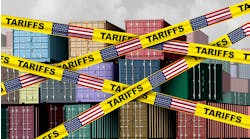How many times have you heard, “We don’t make anything anymore”? This is a common view of manufacturing in America. There is a false sense that the manufacturing sector is in full decline with our production capabilities seriously diminished. When that statement comes directly from the man who was later elected president of the United States (from Chris Wallace’s October 2015 Fox News Sunday interview with Donald Trump), it means that U.S. manufacturing has a serious image problem.
This perspective is wrong, and it is only a small part of the story. It is true that America’s factory workforce has contracted (5.6 million jobs disappeared between 2000 and 2010) and is not likely ever again to reach the halcyon levels of the 1970s. It’s also true that some consumer products that were once a mainstay of American manufacturing - from Converse sneakers and Levi’s jeans to Zenith television sets (now part of LG) - are no longer produced here.
But U.S. manufacturing’s demise is a myth. It’s a big distortion of the truth, considering the critical role the sector still plays in our R&D, innovation, productivity, and national balance of trade. In fact, fabrications (or, in the words of our president, “fake news”) about the U.S. factory sector abound, especially in political rhetoric on both sides of the aisle. The MAPI Foundation is doing its part to put these falsehoods to rest. In a new report published in May, we correct some of the most blatant and resilient imperceptions about manufacturing, including:
U.S. manufacturing is in decline. While American manufacturing has many concerns, especially in the wake of the Great Recession and the subsequent slow global recovery, it remains massive - behind only China in terms of total output. Its $2.2 trillion worth of value-added is more than the national economic outputs of India, Brazil, Italy, and Canada. In fact, 17% of global manufacturing activity occurs in the United States, compared to 7% for Japan and 6% for Germany. Last year, groundbreaking MAPI Foundation research demonstrated that U.S. manufacturing’s entire value chain (including the upstream supply and downstream sales chains) accounts for about $5.5 trillion - or one-third - of the U.S. economy. When then-candidate Trump said that we don’t make anything anymore, he was expressing frustration over the lack of U.S.-made televisions. However, the United States remains a world leader in key manufactures, such as aerospace, automotive, chemicals, oil refining, machinery and equipment, steel, food processing, plastics, and pharmaceuticals.
Manufacturing is a bad career choice. Despite the rise of automation, plenty of manufacturing jobs are available. They go unfilled for two reasons. First, a STEM skills gap exists between manufacturers’ workforce needs and applicants’ qualifications. Second, younger people are not seeking manufacturing jobs because there is a stigma surrounding them. In fact, according to a joint report produced by Deloitte and the Manufacturing Institute, only 37% of parents would encourage their children to pursue a career in manufacturing. They might think differently if they knew the facts. Not only does manufacturing on average compensate employees better than other sectors, but the manufacturing workforce is far more stable than other sectors, from lower turnover rates to lengthier job tenures. Indeed, the median manufacturing worker has 5.3 years of tenure with his or her employer compared to only 3.7 years for the overall private sector. Manufacturing is also a great place to start a business: data suggests that manufacturing entrepreneurship entails below-average risk with lower closure rates.
U.S. manufacturing isn’t needed. Since the 1980s, some economists have questioned the need to make anything in the U.S. (Jagdish Bhagwati of Columbia University is the latest idealist to take up this mantle.) The putative logic is that we are entering a knowledge economy and can purchase our goods from overseas. This is wrong on so many fronts. First, innovation is the key to productivity, and productivity is the key to higher living standards - and nothing drives innovation or productivity more than domestic manufacturing. Three-fourths of private R&D derives from manufacturers. No manufacturers, no innovation. Second, almost all economists agree that trade increases the wealth of a nation. That is especially true for the United States: goods exports account for between 65% to 70% of total U.S. exports. Do the math. Without a domestic manufacturing base, the U.S. economy would have a significantly diminished presence in global export markets. Without the income generated from manufacturing exports, America would need to increase domestic savings massively or persuade foreign investors to finance a $2 trillion deficit to cover the current level of goods imports.
None of this suggests that American manufacturing does not have significant global competition and domestic policy challenges. The sector could and should be more vibrant. However, we still produce plenty of stuff here, and it is imperative we maintain a strong manufacturing base in this country.





